J.P. Feyereisen debuted with the Milwaukee Brewers last season. He threw just 9.1 innings, all in relief, with a 5.79 ERA and 7.80 FIP. However, the Rays saw something they liked in him, and traded Willy Adames and Trevor Richards for Feyereisen and Drew Rasmussen. In 2021, Feyereisen has thrown 29 innings with a 2.48 ERA and a 24.6% strikeout rate. Feyereisen isn’t exactly elite by any measure, and he shows some signs of a nearby regression, but he has a fastball that does something better than every other four-seamer and an unorthodox approach to batter handedness—and that’s what I want to focus on. So instead of my doing my usual analysis of “why player X is going to find success soon,” this analysis will be more of an appreciation piece.
First, Feyereisen sits in the 96th percentile in fastball spin and produces the most vertical movement, or rise, of any pitcher in baseball. Take a look.

The most north point, directly to the left to his name card, is Feyereisen’s plotted vertical movement. He gets 4.1 inches more than the average four-seamer, which results in 29% more rise than the average heater. He averages 2606 rpm on the pitch, which places him in 97th percentile of all pitchers with at least 150 four-seamers thrown thus far. His average velocity sits at just 93.5 MPH, which is extremely middling, so velocity alone isn’t overpowering hitters. Nonetheless, his most often thrown pitch has produced a .207 xBA, a 33.1% whiff rate, and a 31.3% CSW rate. By most measures, his fastball is a plus pitch, all while relying solely on two factors: movement and location.
We’ve touched on the movement already a bit, but let’s keep going with it. In 2020, Feyereisen’s fastball movement was solid, but three months into 2021’s season there’s an improvement. When accounting for gravity, the pitch is now averaging between -9 and -10 inches of vertical movement, whereas in 2020, the pitch only started to show a sign of above -10 inches of movement in the final month of his season.
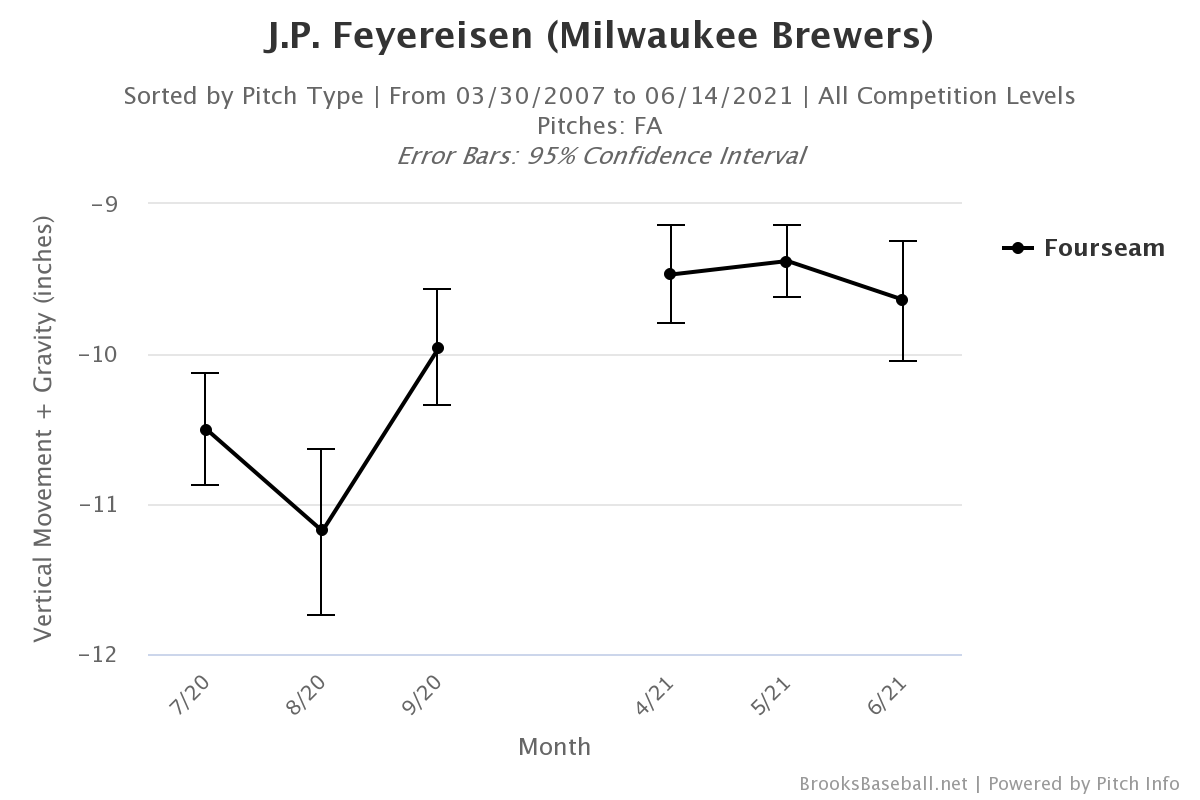
It’s clear the pitch has plenty of ride, and with 95.1% active spin, it’s safe to assume that spin rate alone is probably the leading contributor Feyereisen’s rising fastball. Maybe the analysis is that simple. But maybe there’s still more that feeds into it. Begging the question of, “is there something I’m missing?”, I began to look at possible contributors other than spin that could be powering Feyereisen’s fastball success. I started with a couple of peripherals—Feyereisen’s extension and release point.
Is Feyereisen getting more extension on his fastball? No, definitely not. He averaged 6.2 feet of extension on his fastball last season and is averaging 6 feet this season, so the difference is negligible. But his release point has changed.
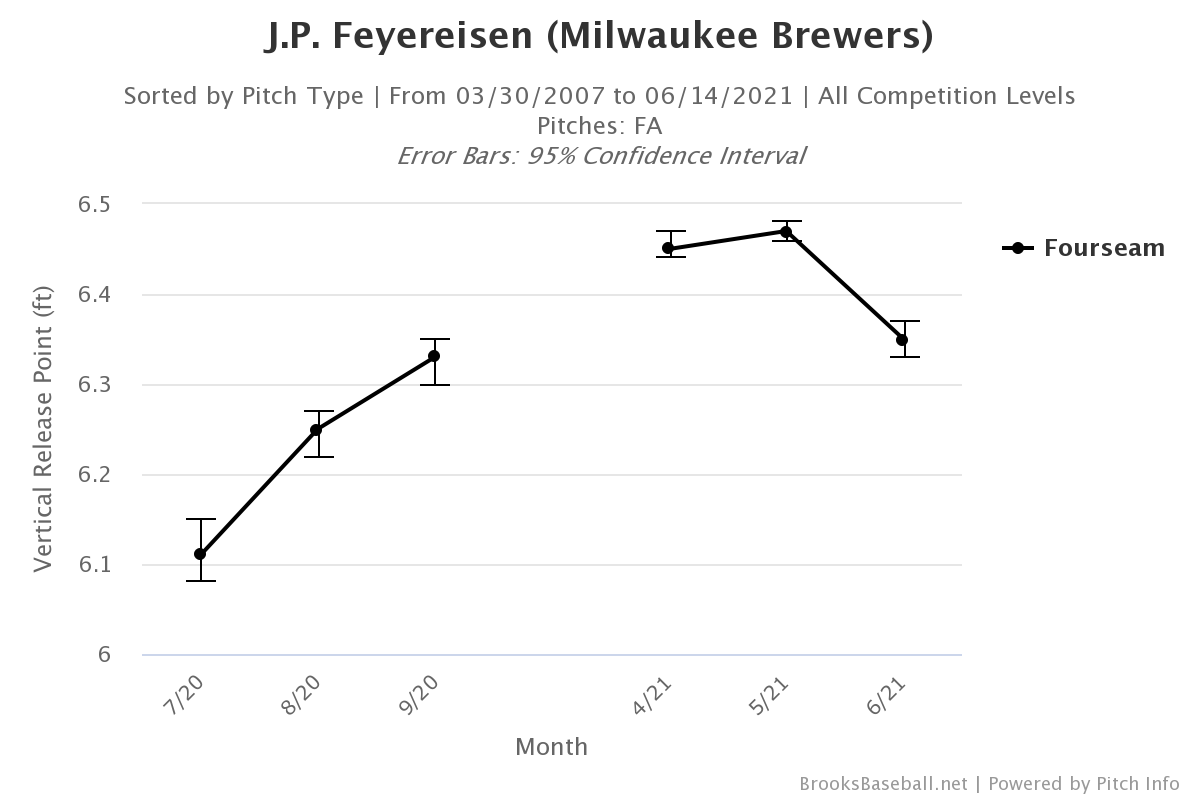
Just relative to the start of last season, at his apex, Feyereisen has gained nearly 0.4 ft (or 4.8 in) on his vertical release point. That’s a big jump! But what really drove me to a conclusion was pairing his release point with his fastball heat map. Last season, Feyereisen lived at the top of the zone with his four-seamer, the blueprint for success for pitchers with a high spin rate fastball. But this season he’s living away from right-handed hitters, or inside to left-handers.
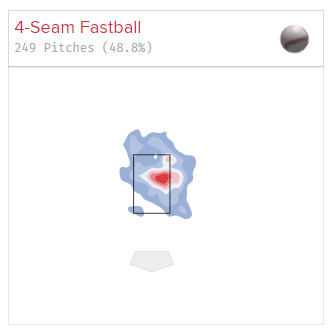
Courtesy of Baseball Savant
And that stuck out to me, because it kind of opposes the common pitching philosophy. This put me down a rabbit hole of video until I found what I was looking for. Here’s Feyereisen pitching against a right-handed hitter.
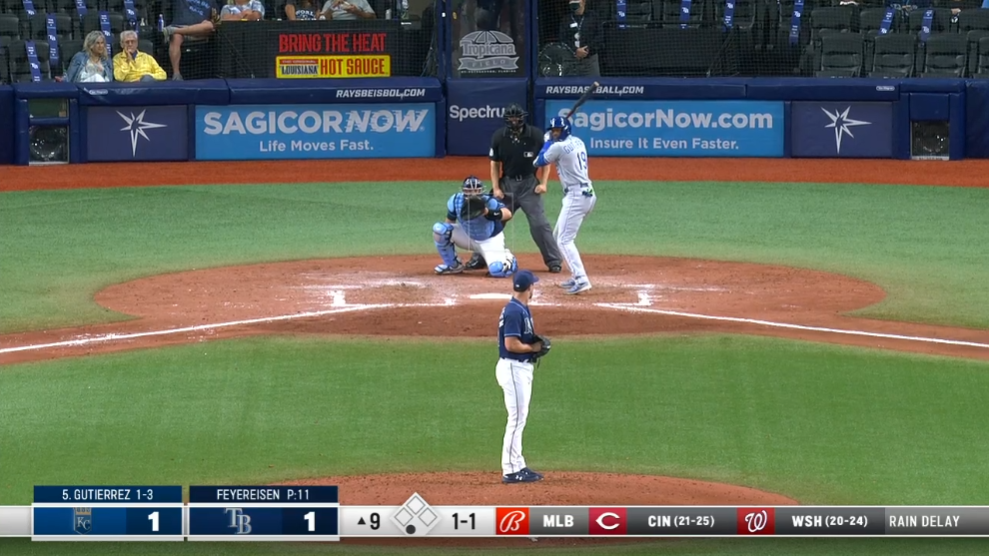
He’s pitching from the third-base side of the rubber, which would force him to either throw across his body or tilt his shoulders more. The latter would result in a higher vertical release point, which we saw earlier, making plenty of sense. But here’s Feyereisen pitching just one inning later against a left-handed hitter.
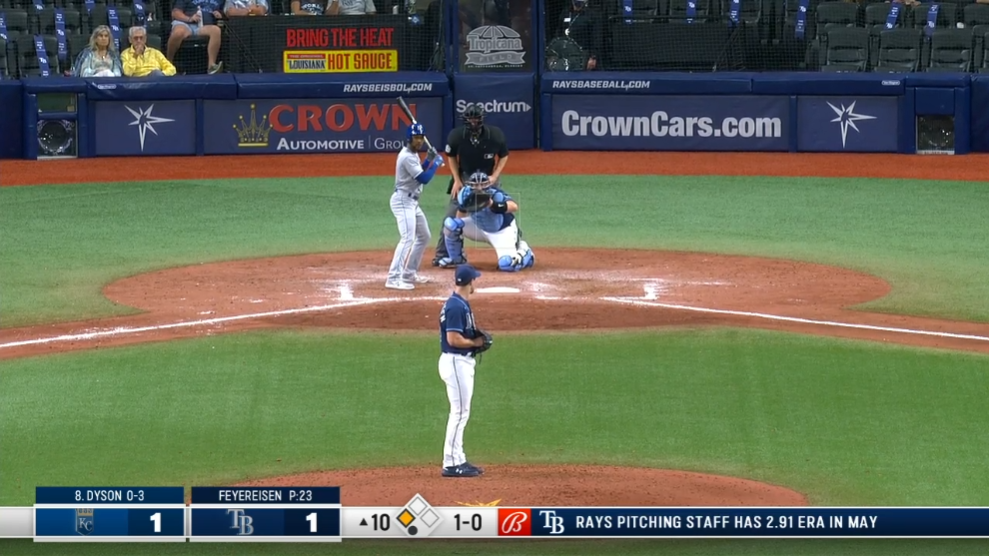
He’s no longer on the third-base side of the rubber. In fact, he looks to be as close to the first-base side as he can get. The camera angle is the same, so I doubt my eyes are deceiving me, but luckily I have Pitcher List great Michael Ajeto to help support my hypothesis. Here’s what Ajeto sent me.
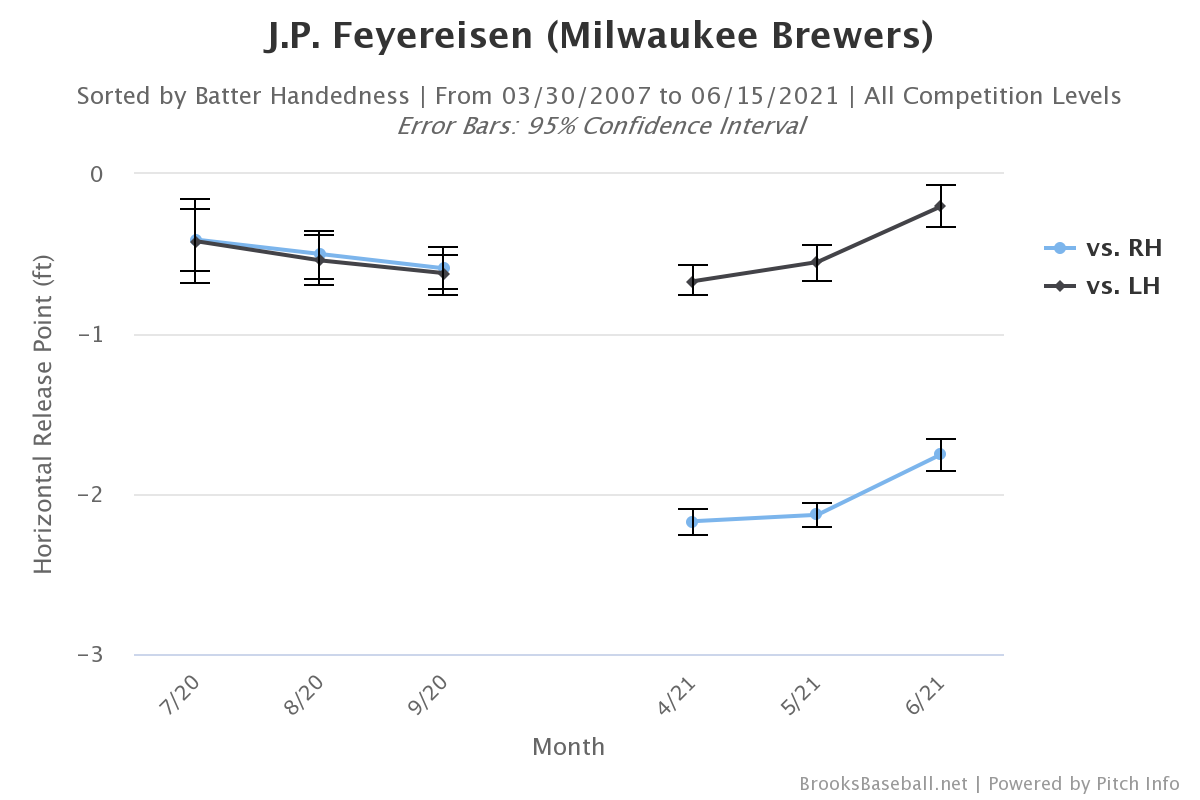
We can see exactly what we suspected. Beginning this season, Feyereisen is throwing on different sides of the rubber dependent on the batter’s handedness. This is creating more than a foot difference in his horizontal release point. Maybe I am naïve, but I can’t think of another pitcher who changes where they pitch from based on the hitter. Low and behold, Brian Menéndez of DRaysBay, highlighted this same uniqueness to Feyereisen (as well as a deeper breakdown of his pitch mix) just a week ago. Although it’s doubtful Feyereisen is the only pitcher to implement this kind of strategy—Yusmeiro Petit, Francisco Liriano, and Alfredo Aceves are a few pitchers who look like they have experimented with it—it does look like a rarity. The approach seems unorthodox, and weird, and the kind of thing that might mess with a pitcher’s repeatability. Perhaps that’s why we see Feyereisen in the third percentile of walk rate. But maybe it’s also be the reason his fastball, and his 97th percentile whiff rate, have been so good this season.
Right-handed hitters are hitting just .130 against Feyereisen. And from a right-hander’s perspective, Feyereisen’s new release point gives off the illusion of throwing from behind the hitter’s front shoulder. On pitches away, the ball continues to run away from them the further in the zone the ball gets. This results in a lot of right-handed hitters trying to pull a pitch that winds up too far away from them. When you pair this effect with the nasty rise that Feyereisen’s heater has, you get a montage of strikeouts like this.
https://gfycat.com/devotedjubilanteyra
Are Feyereisen’s adjustments enough to take him to the next level? I’m not sure. On one side, Feyereisen is a pitcher with a 16.9% walk rate, 43.5% hard hit rate, and whose best pitch is being hit hard more than half the time. But on the other hand, he’s a right-handed hitter’s worst nightmare that also has a changeup with a 36.4% CSW rate and a slider with a 44.2% whiff rate. There’s evidence for both arguments. But that’s beside the point. Feyereisen is doing something that most pitchers haven’t dared to try, and if nothing else, we should appreciate Feyereisen’s uniqueness on the mound.
Photo by John Bunch/Icon Sportswire | Feature Image by Justin Redler (@reldernitsuj on Twitter)

Fascinating piece, great work